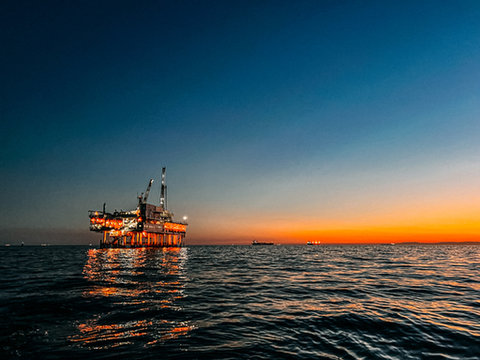Feature
The year in energy: a look back on 2023
Global conflict and energy security worries loomed over the energy industry in 2023. Sonja van Renssen looks back at the most popular energy news stories of the year.

The argument of energy security favoured renewables and oil and gas alike. Credit: Jeremy Poland via Getty Images
Global conflict and energy security worries loomed over the energy industry this year, but despite conflict in Gaza and the war in Ukraine rocking markets, the industry seemed much more “normal” than at any time since the Covid-19 pandemic. We take a look back at the most popular energy news stories of 2023.
Oil and gas bonanza
After taking a big hit during Covid, the oil and gas sector has bounced back to record profits - Chevron, ExxonMobil, BP, Shell and TotalEnergies earned nearly $200bn in 2022. In an era of energy insecurity, the largest oil and gas companies doubled down on tried-and-tested fossil fuel investments while easing up on sustainability commitments. Oil prices could reach $150 a barrel in 2024, the World Bank has said.
In this context, it may come as no surprise that our best-read oil and gas news of the past year reports Israel giving preliminary approval to develop a new gas field near Gaza in June - estimated to hold more than one trillion cubic feet of natural gas. Nearly equally well-read was a much more recent piece about Israel awarding gas exploration licences to six companies, including Eni and BP, for off the Mediterranean coast.
In an era of energy insecurity, the largest oil and gas companies doubled down on tried-and-tested fossil fuel investments.
The popularity of other discovery stories – Turkey’s discovery of natural gas worth over $500bn in the Black Sea and 150 million barrels of oil worth an estimated $12bn in the Mount Gabar Area - demonstrate the continued interest in and dependence on oil and gas in the world economy. Technological innovations such as a new corrosion protection technology from Petronas, challenges such as strike action at Chevron, and other major deals (including divestments) have dominated our headlines.
You have also come back time and again for our compilations of: deadliest disasters, biggest offshore drillers, top oil producers, and biggest oil and gas earners in terms of companies and individuals. The explainer that tops all others remains a history of the oil and gas industry from 347 AD to today.
Electrification and the energy transition
However, the International Energy Agency (IEA) said in an oil and gas special at the end of November, that the industry “faces a moment of truth” as the clean energy transition advances. Released in the run-up to COP28 in Dubai, the report notes that global demand for both oil and gas is set to peak by 2030 even with today’s policies.
Many, including the IEA, argue that energy efficiency and renewables are the best way to bolster energy security and meet the ever-more urgent needs of the net-zero agenda. COP28 is expected to see governments commit to further action to limit global temperature rise to 1.5°C. In the IEA's latest clean energy progress check, published this summer, only three out of 50 metrics are fully “on track” for net zero in 2050 - solar PV, electric vehicles and lighting.
In the IEA's latest clean energy progress check, only three out of 50 metrics are fully “on track” for net zero in 2050.
Electrification, renewables and energy efficiency are regarded as the bedrock of the energy transition; affordability is seen as its biggest challenge. Our best-read power news of the past year captures both sides of this coin: the UK's Octopus Energy unveiling a £3000 heat pump. Debates over the use of heat pumps vs gas/hydrogen boilers continue across Europe, as the EU looks set to legislate on the matter in the near future.
Other stories showcase other crucial dimensions of the energy transition, including battery storage, carbon offsets, innovations in, for example, water cooling for solar panels and electric vehicles growth forecasts. Nuclear power remains a steadfast top topic for readers, but also wind, tidal, hydroelectric and geothermal power, and hydrogen. Our best-read power analysis over the past year reports on China’s semiconductor breakthrough.
Critical minerals take over
The worlds of mining and energy are increasingly interlinked, as the energy transition puts minerals like lithium, cobalt, nickel, copper, manganese and rare earths in the spotlight. These are currently essential for the technologies behind solar PV, wind, EVs and batteries. However, for many, there is a mismatch between climate ambitions and availability.
A GlobalData report this summer warned that the future of green technology hinges on sustainable supplies of critical minerals, and that international collaboration, responsible mining practices, and research and innovation will be essential to secure it.
With worries about supply, it is perhaps small wonder that our two best-read mining news stories from the past year both centred on discoveries of new lithium deposits: India announces discovery of 5.9 million tonnes of lithium and Iran claims to have discovered 8.5-million-ton lithium deposit. Our feature on the world's top ten biggest lithium mines remained highly read throughout the year.
This was the year that saw the US government add copper to its critical raw materials list, and Norway discover a massive deposit of phospate within its borders. But although critical minerals dominate current coverage, the traditional mining industry rumbles on and remains far bigger. From uranium, where Sweden planned to lift its uranium mining ban and uranium prices hit decade high, to coal, green steel and cybersecurity, traditional minerals remained popular.
Australia remains a hotbed for mining - the industry accounts for 75% of Australian exports and almost 15% of GDP - and at the 10th anniversary of its most influential mining event, IMARC, in late October over 9,000 delegates from over 120 countries debated how electrification, automation and AI, as well as the ESG challenge, will shape the industry in the years to come.